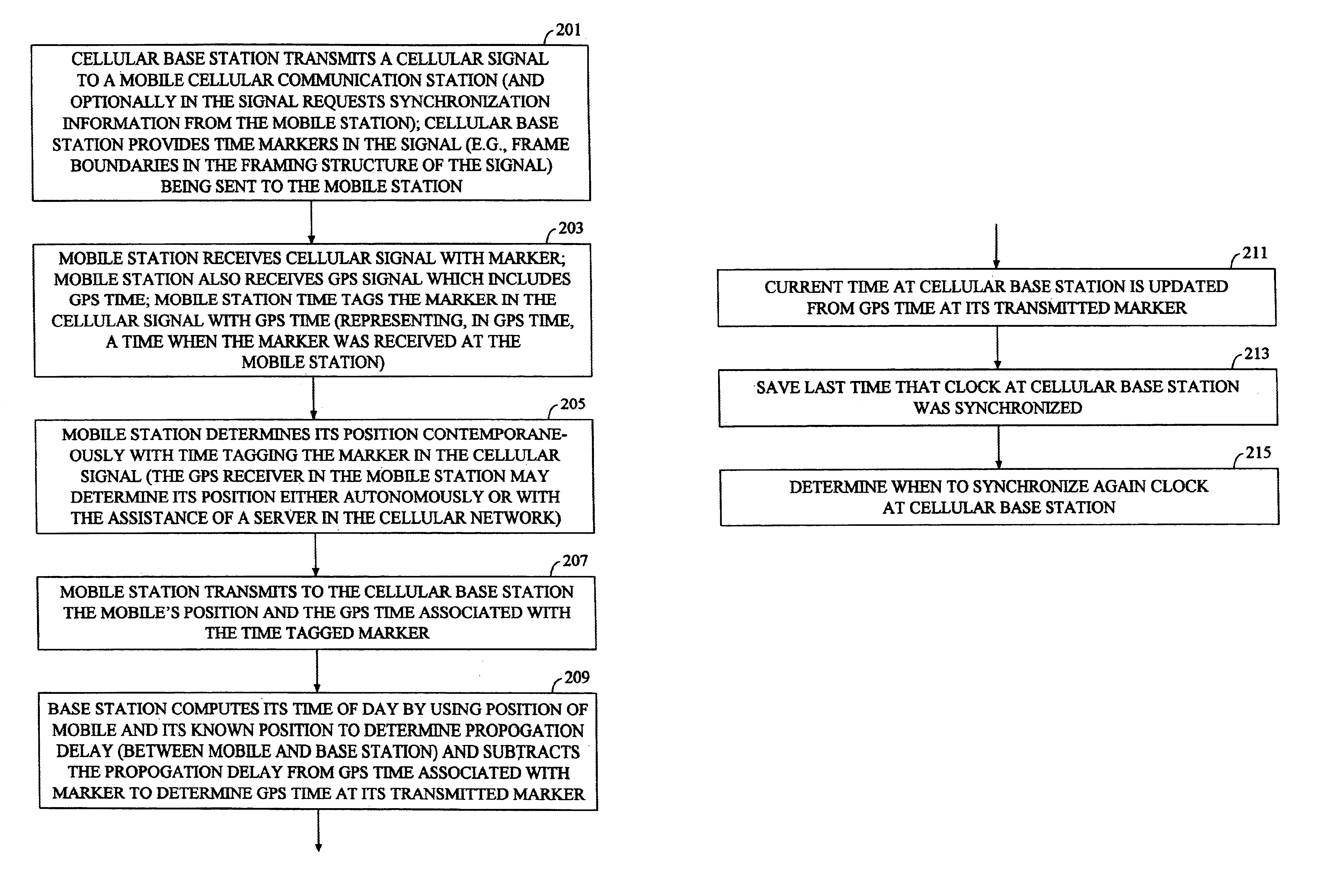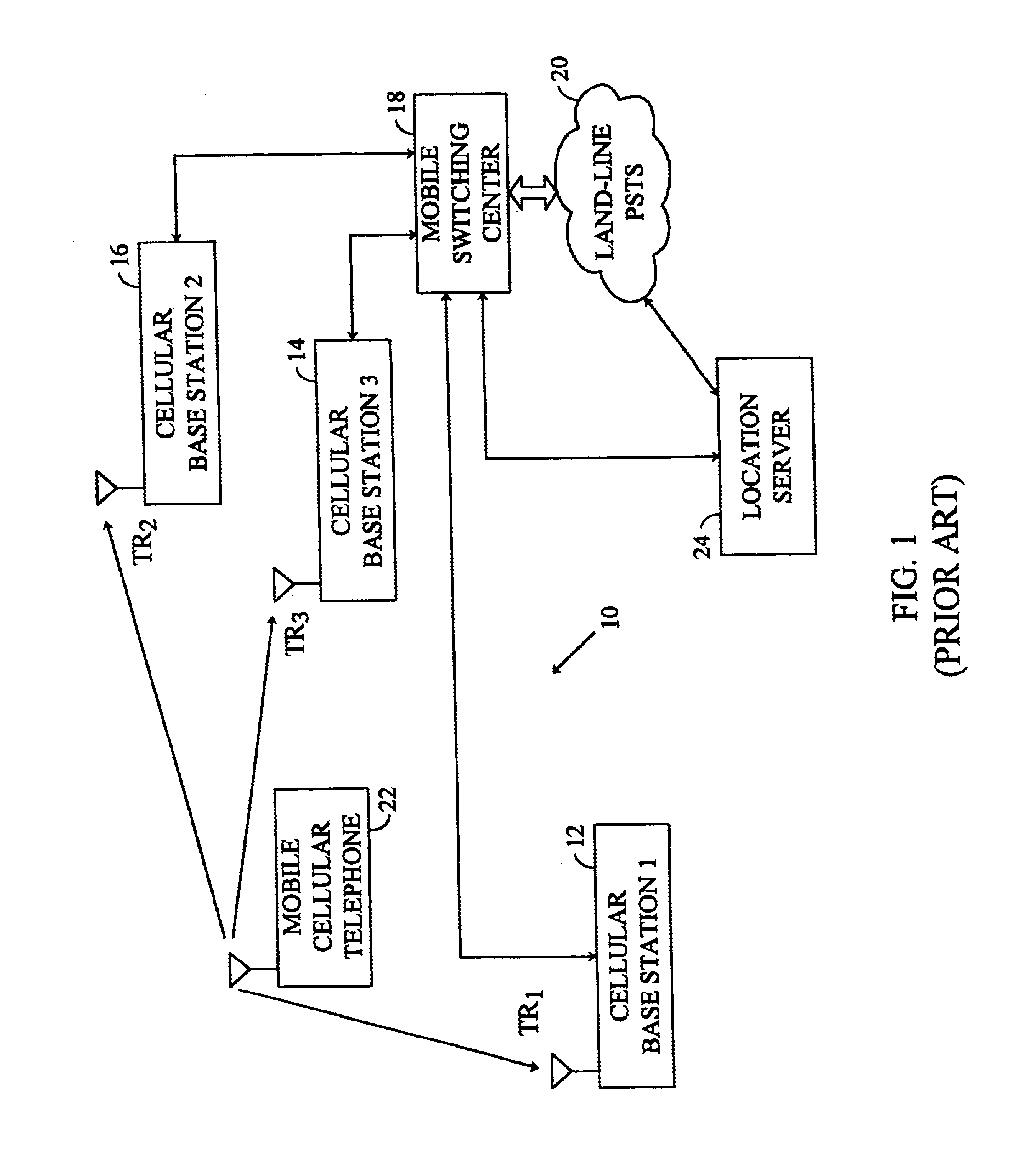Methods and apparatuses for using mobile GPS receivers to synchronize basestations in cellular networks
a mobile gps receiver and cellular network technology, applied in the field of methods, can solve the problems of not being able to perform accurate round trip timing measurements at all, not being able to perform round trip measurements to each of two or three basestations, and construction of new special fixed equipment, so as to avoid the high cost of real estate
- Summary
- Abstract
- Description
- Claims
- Application Information
AI Technical Summary
Benefits of technology
Problems solved by technology
Method used
Image
Examples
Embodiment Construction
Various methods and apparatuses for determining time at a cellular basestation and for otherwise synchronizing cellular basestations in a cellular network are described herein. In the following description, numerous specific details are set forth in order to provide a thorough understanding of the present invention. For example, various architectures for basestations and mobile communication stations are provided for illustrative purposes rather than to be construed as limitations of the present invention. It will be evident, however, to one skilled in the art that the present invention may be practiced without these specific details. In other instances, well-known structures and devices are shown in block diagram form to facilitate explanation.
In one approach described herein, mobile communication stations are utilized that contain (or are coupled to) GPS receivers which determine both time-of-day and position. FIG. 2 shows an example of such a mobile communication station. This GP...
PUM
 Login to View More
Login to View More Abstract
Description
Claims
Application Information
 Login to View More
Login to View More - R&D
- Intellectual Property
- Life Sciences
- Materials
- Tech Scout
- Unparalleled Data Quality
- Higher Quality Content
- 60% Fewer Hallucinations
Browse by: Latest US Patents, China's latest patents, Technical Efficacy Thesaurus, Application Domain, Technology Topic, Popular Technical Reports.
© 2025 PatSnap. All rights reserved.Legal|Privacy policy|Modern Slavery Act Transparency Statement|Sitemap|About US| Contact US: help@patsnap.com



